What is Generative Art?
Art can possess generative qualities, either by design or incidentally. Such qualities showcase the myriad interpretations of what it means for art to be generative.
I favor definitions that encourage exploration and discussion of generative art rather than strictly delineating what it is or isn't.
Tentative Definitions
Consider:
Generative Art: Art produced through self-sustaining processes.
To clarify, an autonomous process is:
Autonomous Process: A process that operates independently from direct human manipulation.
Structuring the Discussion
I propose dividing autonomous processes into randomness, systematic rules, and natural systems. This piece aims to explore these facets, providing examples of their utilization in generative art.
While this classification may have its shortcomings, including overlaps and exceptions, it serves as a guide to understanding the nuances of autonomy in art and the exploration of generativity.
The Essence of Generation
At its core, "generative art" often relies on randomness.
An artist's algorithm might yield varied outcomes based on the configuration of certain variables, such as the quantity and placement of shapes, their sizes, and colors.
Below, (work-in-progress) visuals illustrate how variables govern the arrangement and connectivity of nodes, influencing the aesthetic of the connections.
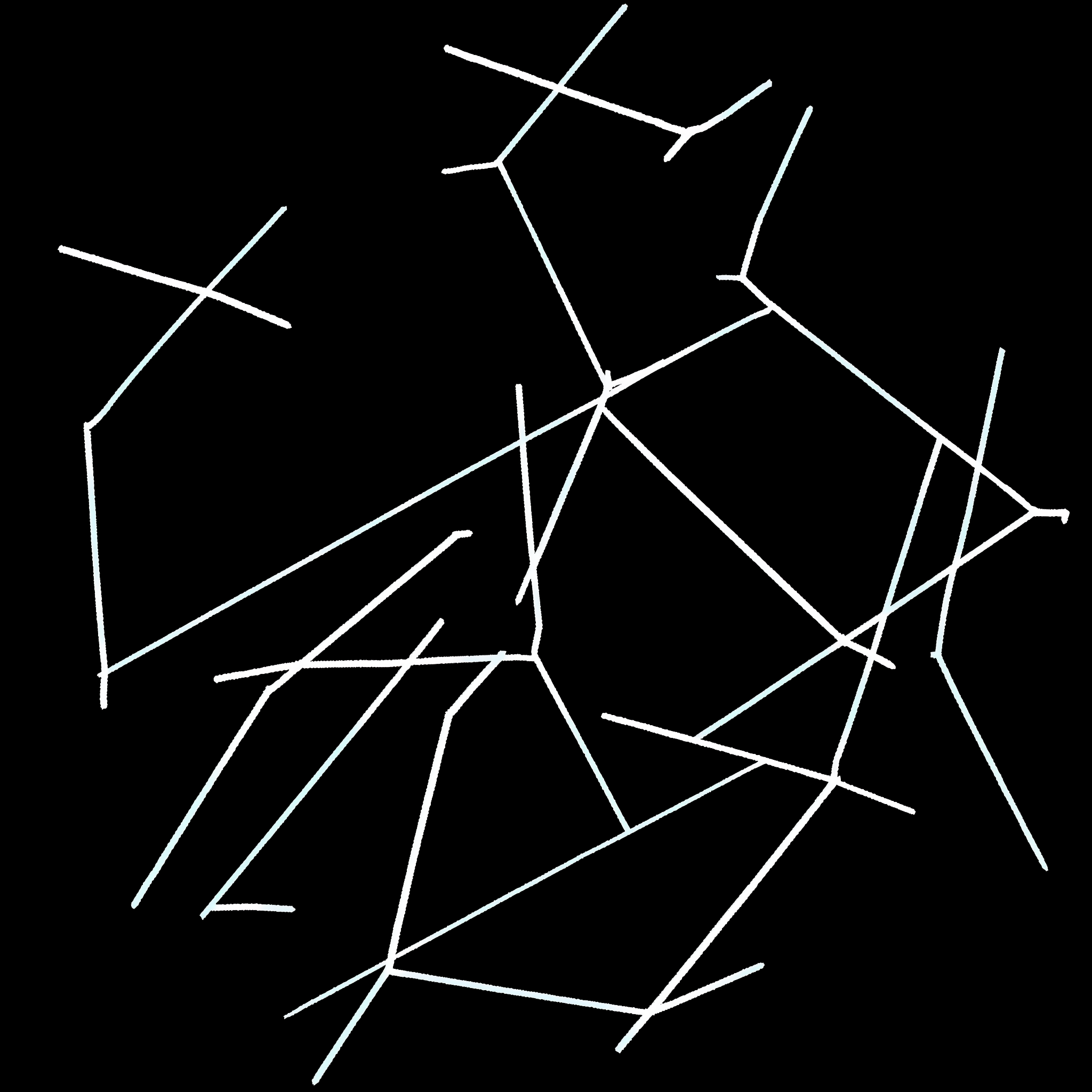

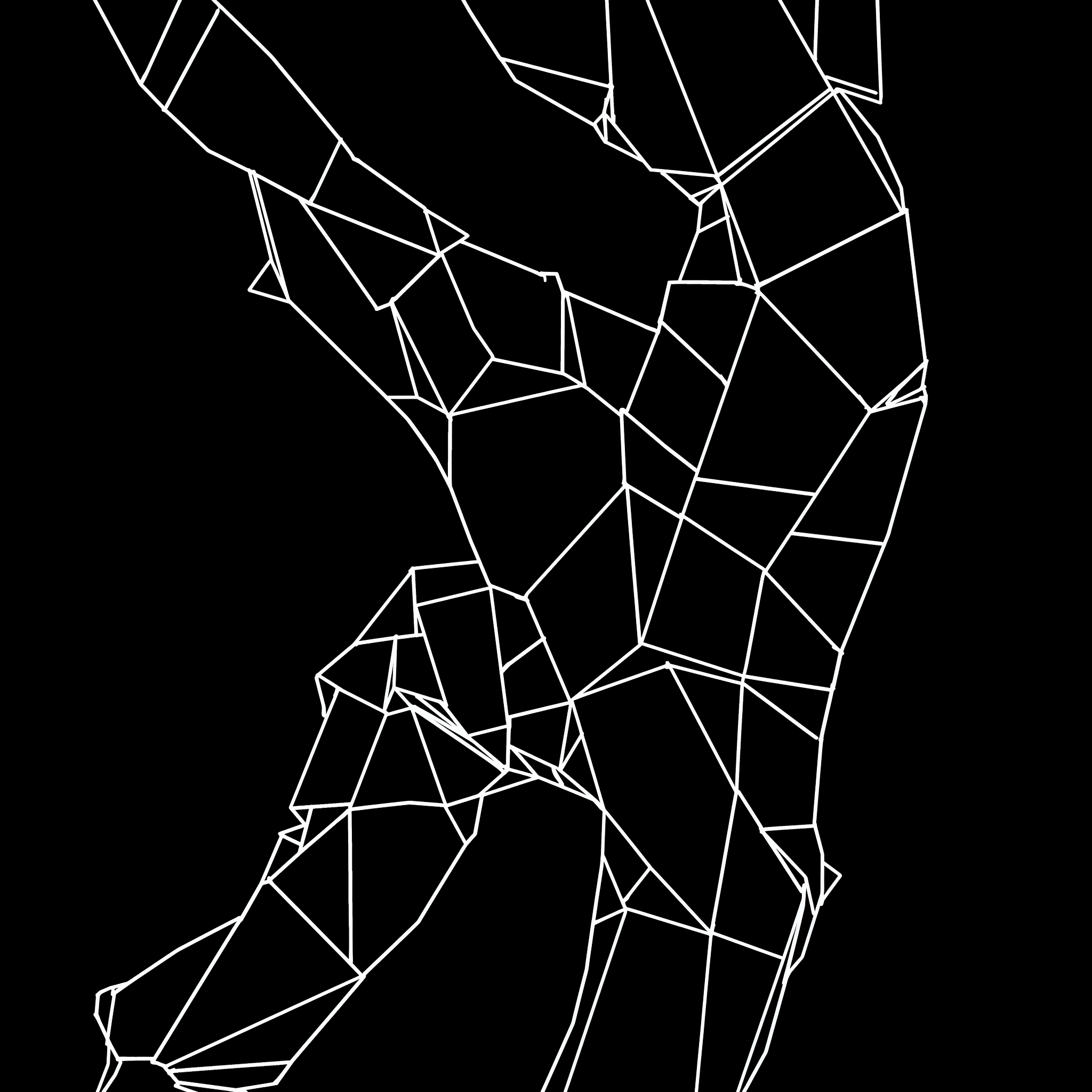
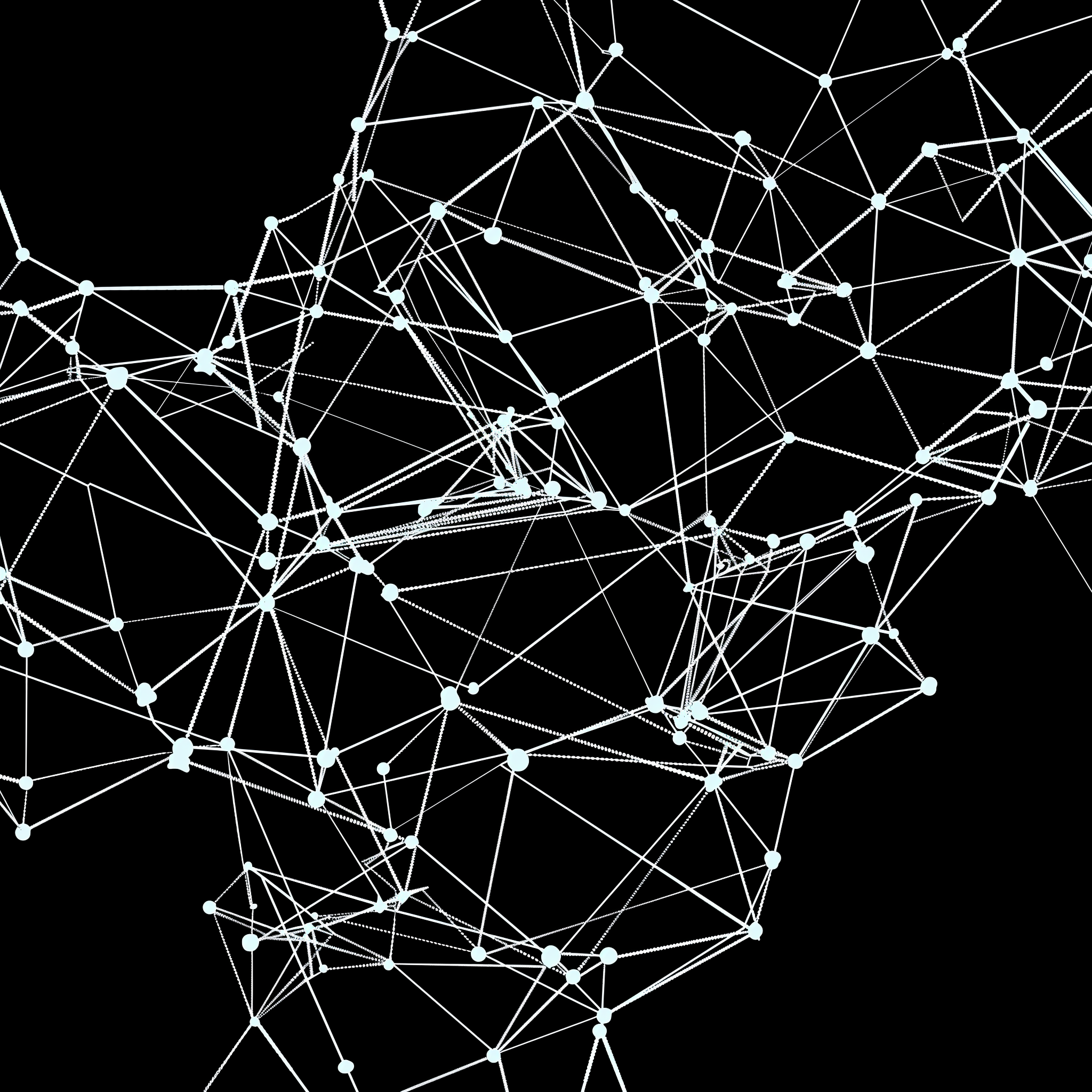
Indeed, we could define variable values in the code or adjust them via sliders, which would signify a direct human-controlled, non-autonomous method. This is particularly cumbersome for defining characteristics for a large number of nodes, diverging from the core principles of generative art.
Instead, embracing true generative art involves employing functions like random() to facilitate the generation of varied imagery with each execution, thus producing diverse results.
Vera Molnar, a pioneer in generative art, extensively incorporated randomness into her work. Viewing this clip of her discussing her methodology is highly inspirational.
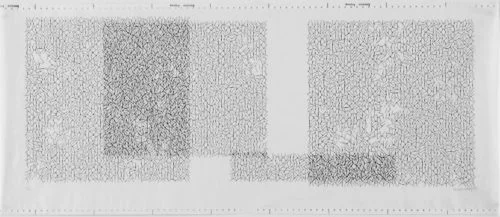 Vera Molnar's discussion on generative art.
Vera Molnar's discussion on generative art.
Pseudorandomness
An important distinction, both conceptually and technically, is the shift from genuine randomness to pseudorandomness.
The nature of computers precludes them from generating truly random numbers. Nevertheless, artists can simulate randomness satisfactorily for creative purposes using pseudorandom number generators (prng).
A prng initiates with a "seed" and applies an algorithm to generate a number. The seed is often derived from a changeable factor, like the computer's current timestamp.
Utilizing the algorithm with numerous unique seeds aims to produce a uniform distribution of numbers. This principle is illustrated in a p5js example that distributes 10,000 squares across a canvas, their placements determined by the random() function.
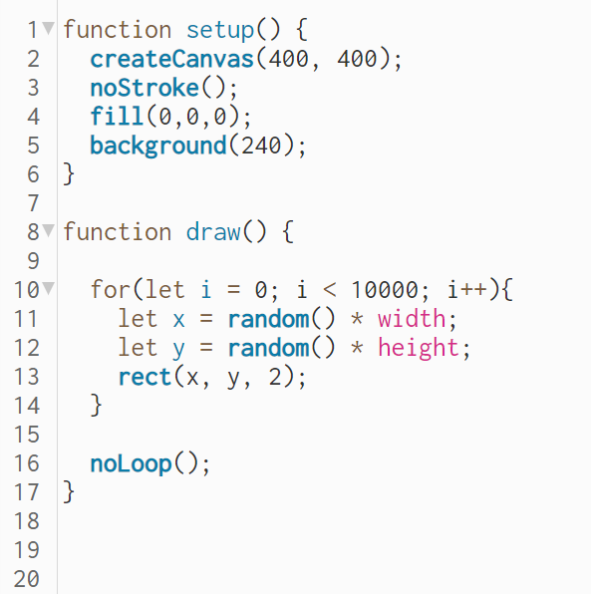 Uniform distribution of squares via the
Uniform distribution of squares via the random() function.
The seed can be static for purposes such as testing or achieving repeatable results. In the realm of NFTs, platforms like fxhash and ArtBlocks utilize a blockchain transaction hash as the seed, ensuring consistency in the randomness.
Using the same seed invariably yields identical outcomes, rendering the process deterministic, not truly random.
True Randomness
Certain fields, such as banking and cryptography, necessitate truly random numbers. These can be obtained from chaotic natural phenomena, like atmospheric noise or the visual dynamics of lava lamps.

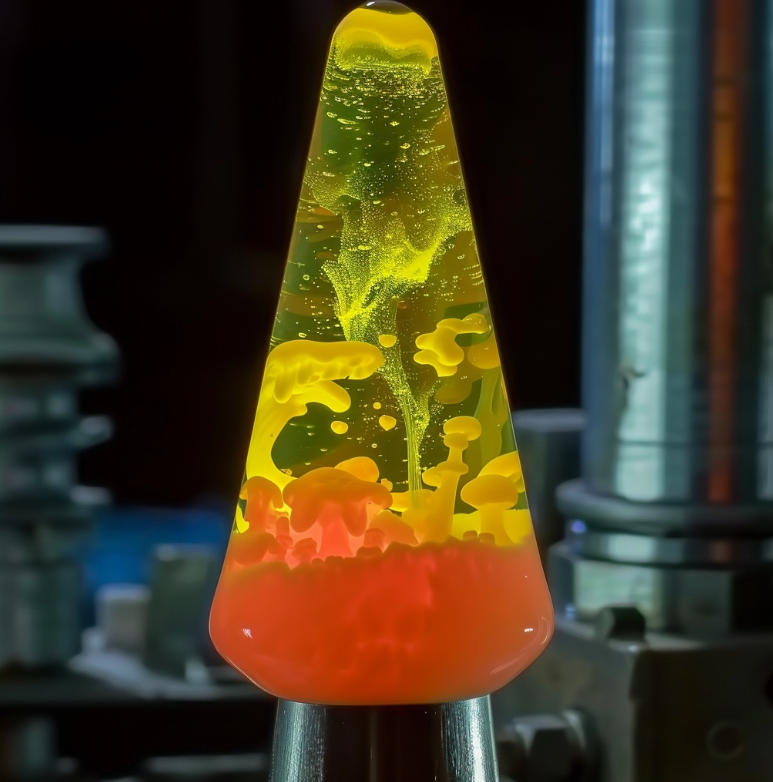
Exploring truly random numbers in generative art raises intriguing questions about the impact of randomness versus pseudorandomness on the artistic outcome. Does the nature of the number source alter the art significantly?
A Philosophical Interlude
While a pseudorandom number generator is deterministic and predictable, natural sources of numbers are inherently chaotic and unpredictable.
However, this unpredictability presupposes a non-deterministic universe. If our universe is deterministic, where every event is the result of preceding ones, then true randomness might not exist. Quantum mechanics complicates this by demonstrating behaviors in subatomic particles that appear genuinely random and without cause. The debate on determinism continues without consensus.
I intend to explore these themes further in upcoming blogs, as they unravel fascinating conceptual strands.
At present, we can assert that sources like atmospheric noise are unpredictable in practical terms, and quantum random number generators may indeed be unpredictable on a theoretical level.
Distribution
While a good prng should offer an even distribution of outcomes, artistic applications sometimes benefit from manipulating these results towards an uneven distribution.
This sketch I crafted showcases this concept, using functions from easings.net intended for animation purposes.
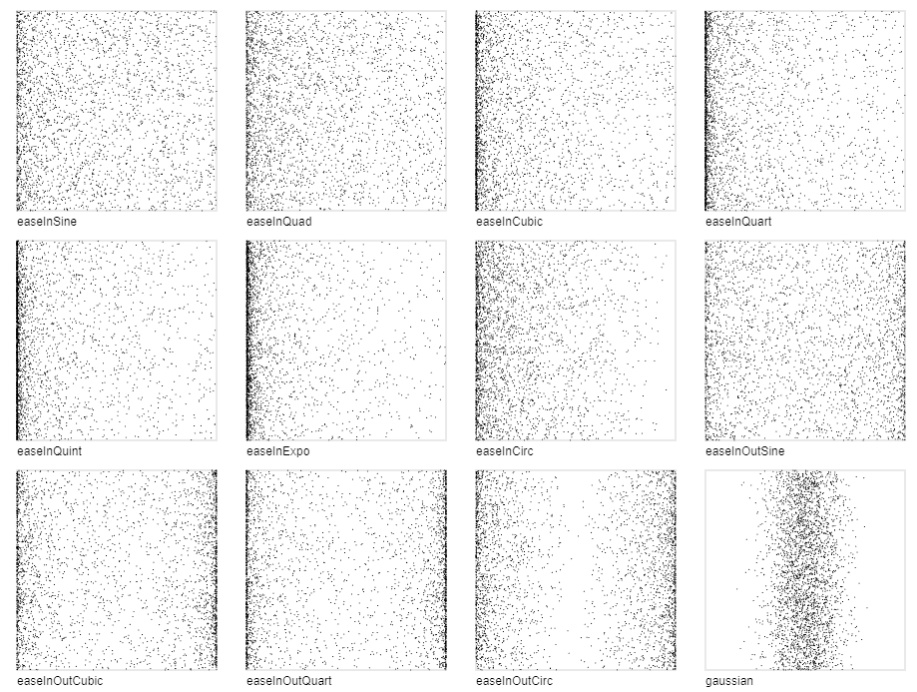
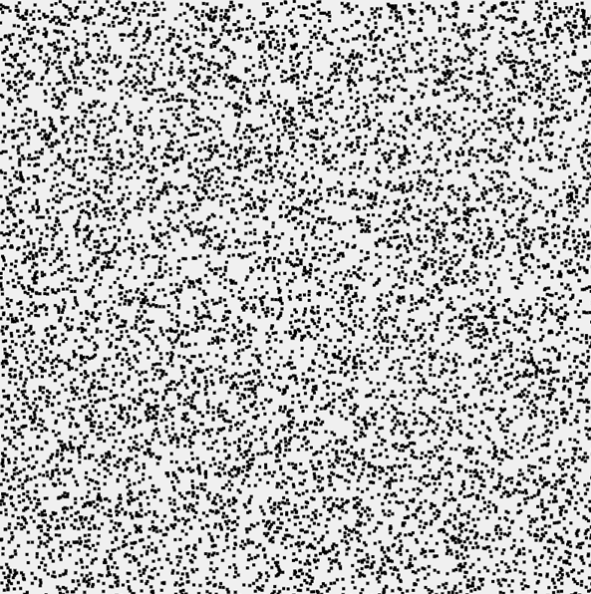
Alternative Algorithms
Aside from pseudorandom number generators, procedural generation techniques like Perlin noise offer a different approach. Where a prng delivers evenly distributed yet unrelated outcomes, Perlin noise ensures a sequential similarity among results.
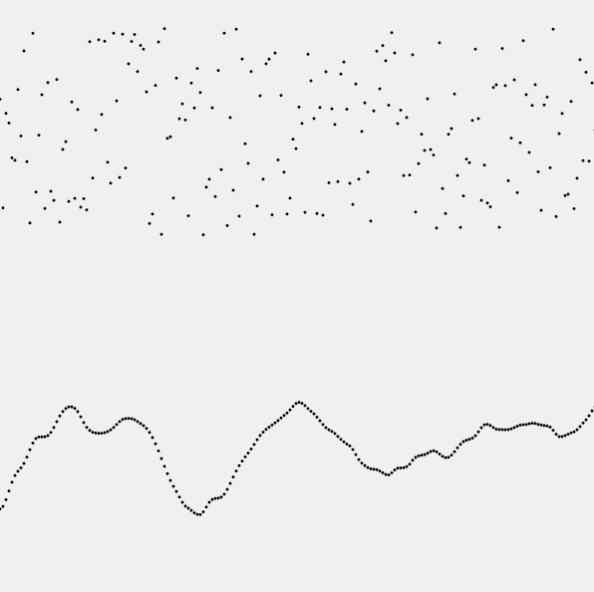
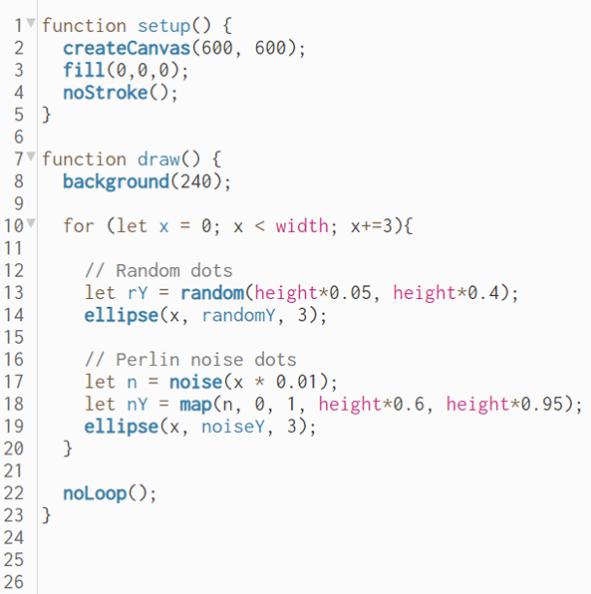
Noise proves invaluable for generating organic-looking movements and shapes. Here are two pieces from Amy Goodchild's Genuary 2022 series, which rely on noise to determine variable values.
Reflecting on Randomness
The philosophical inquiries surrounding randomness are profound, offering a rich field for conceptual exploration.
Aside from these theoretical considerations, tools like pseudorandomness and procedural generators, such as Perlin noise, provide accessible yet powerful means to achieve diverse and compelling results.
Artistic Instructions
Sol LeWitt's artworks serve as quintessential examples of rule-based art. Some of his works are essentially sets of instructions rather than the physical realizations of those directives.
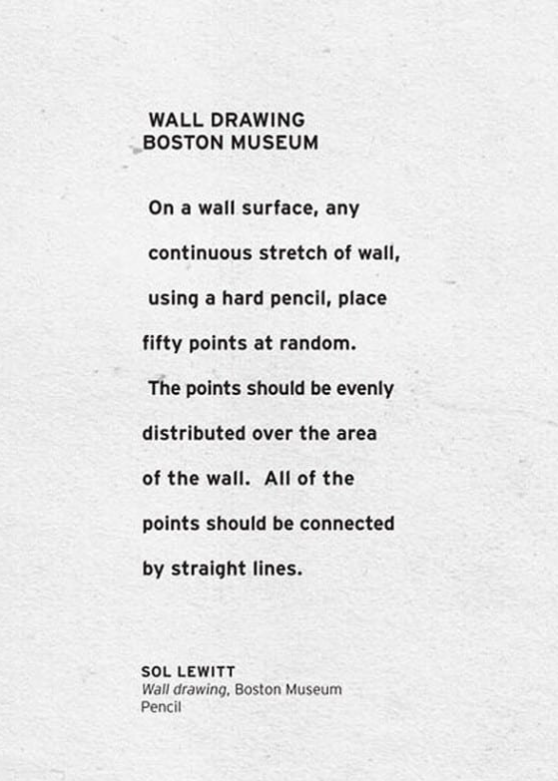
Sol LeWitt - Wall Drawing #118
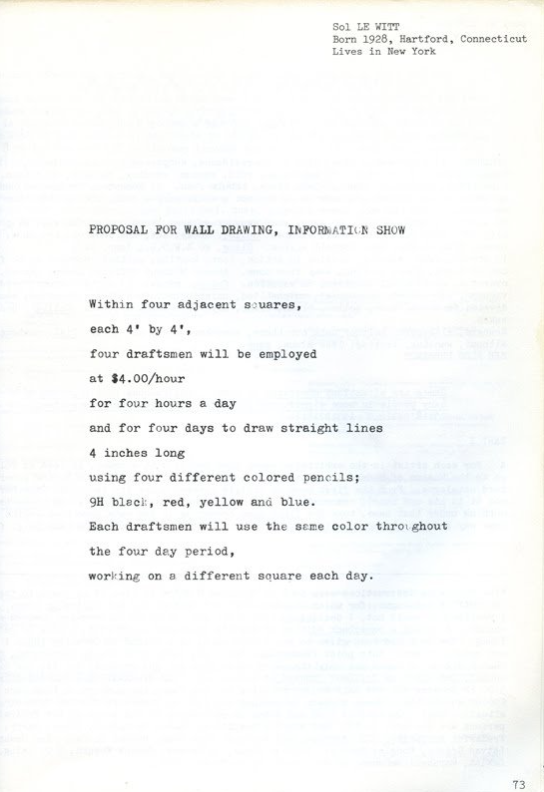
Sol LeWitt - Proposal for Wall Drawing
LeWitt's instructions have been realized multiple times, showcasing the interpretive flexibility and collaborative nature of executing such works.

Genuary Day 7 - Sol LeWitt Wall Drawing
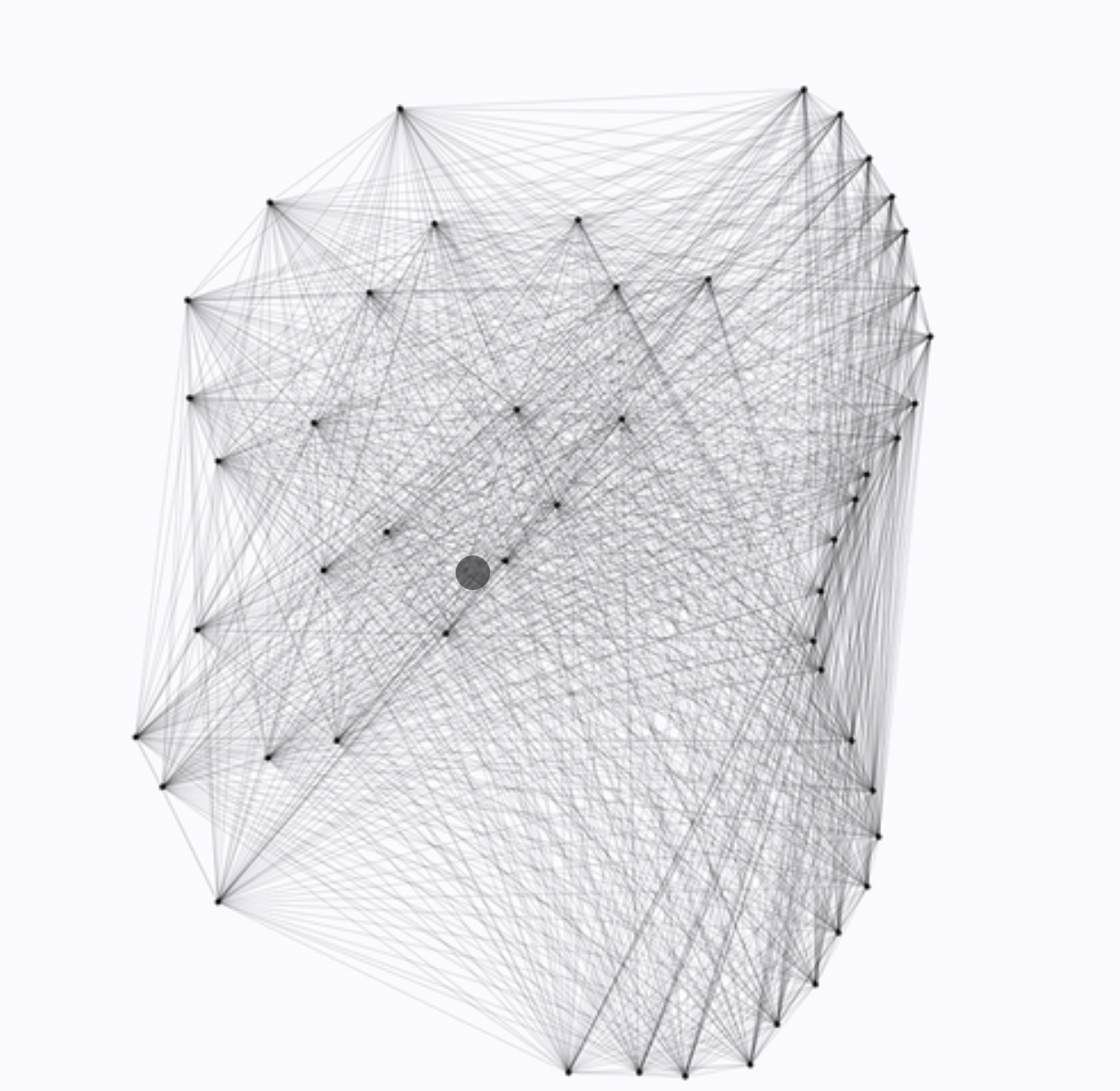
Interactive Sol LeWitt Wall Drawing
Sol LeWitt drawing being made at Dia Beacon
The instructions offer a blend of specificity and openness, allowing for interpretation and variation by those who bring them to life, whether human or machine. This dynamic mirrors the distribution of control seen in many generative art projects, where the artist shares creative agency with the algorithms and the execution medium.
Instructional Experiments
In Studio Moniker's project Red Follows Yellow Follows Blue Follows Red, participants adorned in colored capes and headphones are guided by specific instructions. For example, those in red might be directed to "follow yellow but avoid blue," whereas those in blue are advised "follow red but avoid yellow."
This human-centric experiment highlights the nuanced balance between artist intent and participant interpretation, as individuals navigate the instructions in varying degrees of fidelity, thereby altering the collective outcome and control dynamic.
As each participant acts on their individual directives, emergent patterns and behaviors arise, illustrating the collective impact of singular actions.
Emergent Phenomena
When elements within a system are governed by individual rules and properties, unexpected and fascinating outcomes can emerge at a macro level.
Emergence is a prevalent phenomenon in nature, observable in the behaviors of ant colonies, bird flocks, weather patterns, and more. By defining rules for individual components, we can engineer our systems of emergence.
Cellular Automata
Cellular automata, such as Conway's Game of Life and Wolfram's rules, epitomize emergent systems.
Conway's Game of Life is structured around a grid of cells, each designated as alive or dead initially (either randomly or based on a pattern). Each cell evaluates its eight neighbors to decide its next state, following a set of rules:
-
A live cell with fewer than two live neighbors dies, mimicking underpopulation.
-
A live cell with two or three live neighbors persists through to the next cycle.
-
A live cell with more than three live neighbors dies, reflecting overpopulation.
-
A dead cell with exactly three live neighbors revives, simulating reproduction.
These dynamics generate complex patterns across the grid, influenced by the initial configuration.

3 phase pulsar

Finite pattern

Gliders
Experience my implementation of Conway's Game of Life here. Be sure to initiate the simulation by clicking the play button in the top left and familiarize yourself with the controls outlined at the top of the code.
These systems can be enriched and complicated by varying the number of potential states, modifying the neighborhood size and shape, and experimenting with different sets of rules. Systems that cycle through a sequence of states, like 0, 1, 2, 3, 0, 1, 2…, are known as Cyclic Cellular Automata.
Dynamic Ecosystems
Moving beyond static grids, we can create complex emergent systems featuring mobile entities, each adhering to its set of behaviors inspired by natural phenomena such as flocking, mating, feeding, and mortality.
Here are examples of systems I've developed, showcasing behaviors like flocking, evasion, reproduction, repulsion, and predation.
These entities exhibit group movement and generate auditory signals when in close proximity.
Exploring the interplay and dependencies within such ecosystems offers profound insights. Incorporating life cycles, resource requirements, and predator-prey dynamics allows for the observation of an ecosystem's rise or decline.
Simulating Natural Phenomena
Artists frequently emulate natural phenomena through algorithms reflecting principles such as reaction-diffusion, diffusion-limited aggregation, physical forces, crystalline growth, arboreal development, and slime mold behaviors.
Simulating complex real-world systems and phenomena involves modeling the rules that govern their constituent parts and the influencing variables.
Diffusion-limited aggregation simulation by Andy Lomas
These simulations span a spectrum of abstraction, bridging art and science. Some works draw loose inspiration from natural occurrences, while others aim to closely replicate and investigate the tangible world.
Consider these two representations of snowflakes. The first set of images showcases outputs from Snowflaker, generating aesthetically pleasing snowflake SVGs. The second set features Gravner-Griffeath snowflakes (interactive example here), produced by accurately simulating crystal growth under varying conditions.
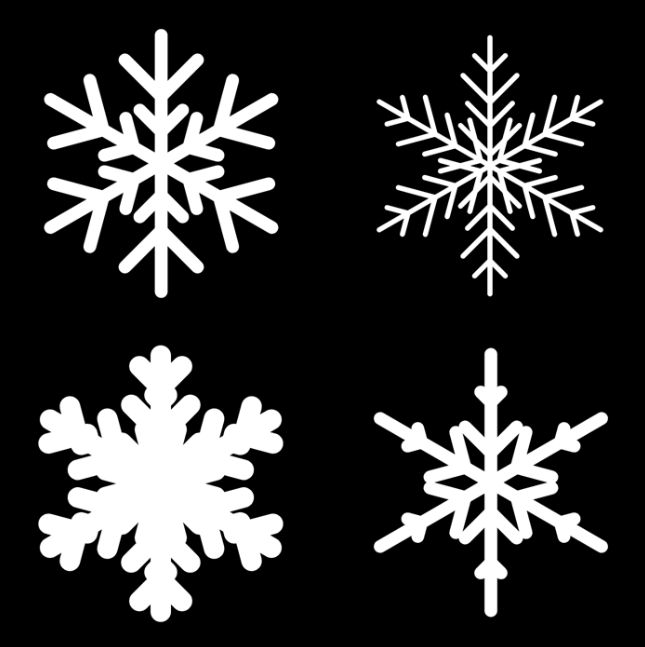
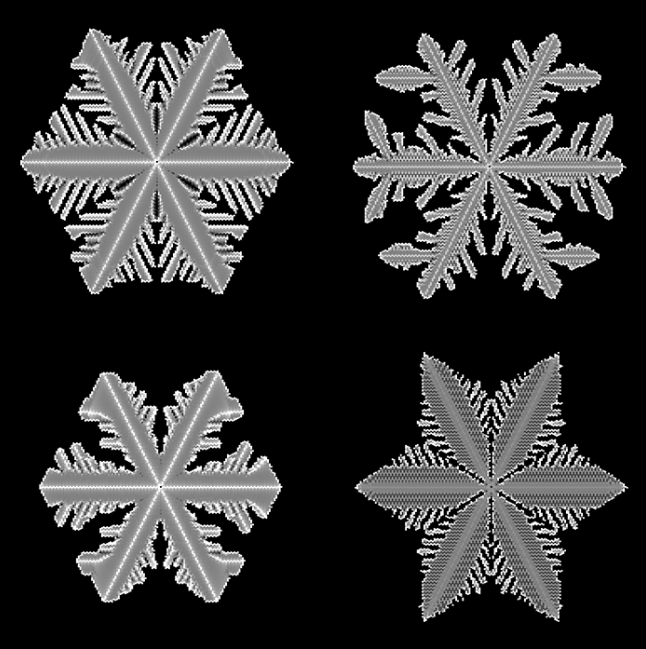
Cultivating Art
Magical Contamination by Antoine Bridier-Nahmias turns petri dishes into canvases for microbial growth. Echoing the approach used in Gravner-Griffeath's snowflakes, the artist manipulates conditions such as oxygen levels, lighting, and temperature to influence mold development.
This initiative highlights the distinction between simulated environments and the unpredictability of the real world, though it could be argued that the "simulation" we perceive as reality is equally chaotic and complex.
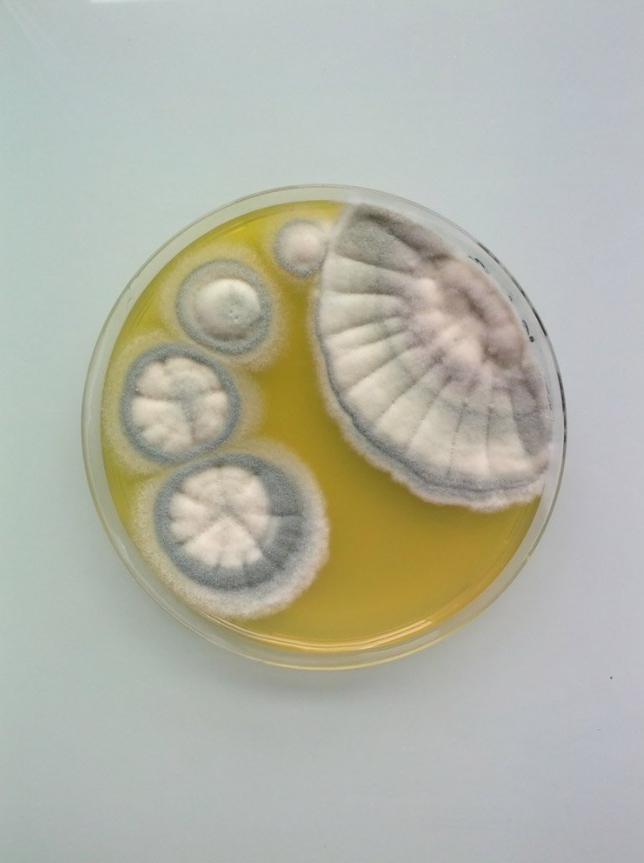
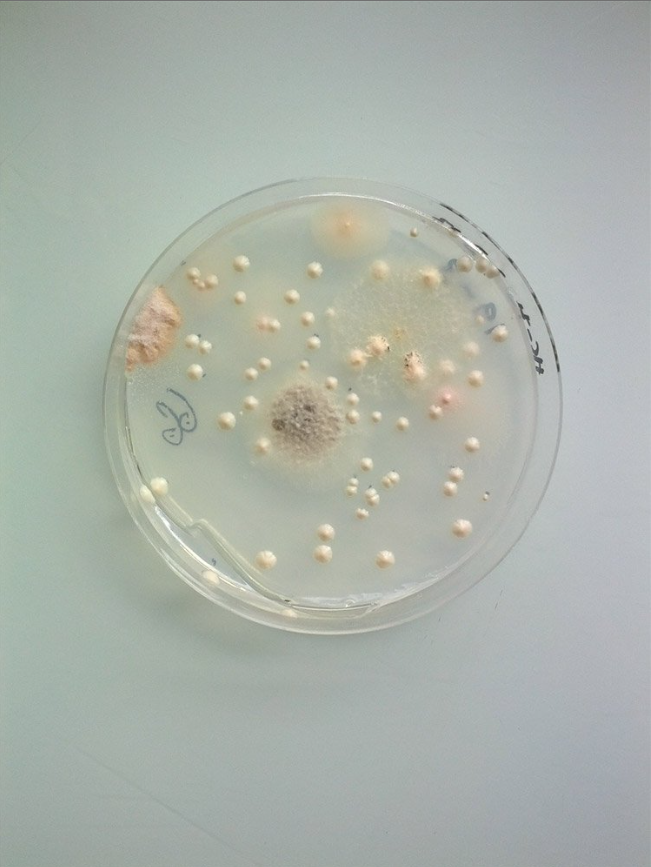
Mathematics in Motion
Mathematics underpins many rule-based systems, with geometry and trigonometry being particularly indispensable for my work. The frequent appearance of SOHCAHTOA serves as a constant reminder of the beauty and utility of mathematics in art.
Dave Whyte's works exemplify the elegance of mathematical principles in visual art.
For those interested in delving deeper into the intersection of mathematics and art, I recommend this insightful book on the subject.
Conceptualizing Algorithms
Occasionally, ideas manifest as a series of "what ifs," essentially forming the blueprint of an algorithm—a sequence of steps to be followed.
Casey Reas' pen-plotted series RGB-3 illustrates this concept perfectly. The angles mentioned in the titles refer to the orientations of red, green, and blue lines within the compositions. Selective omission of line segments creates unique overlay effects.
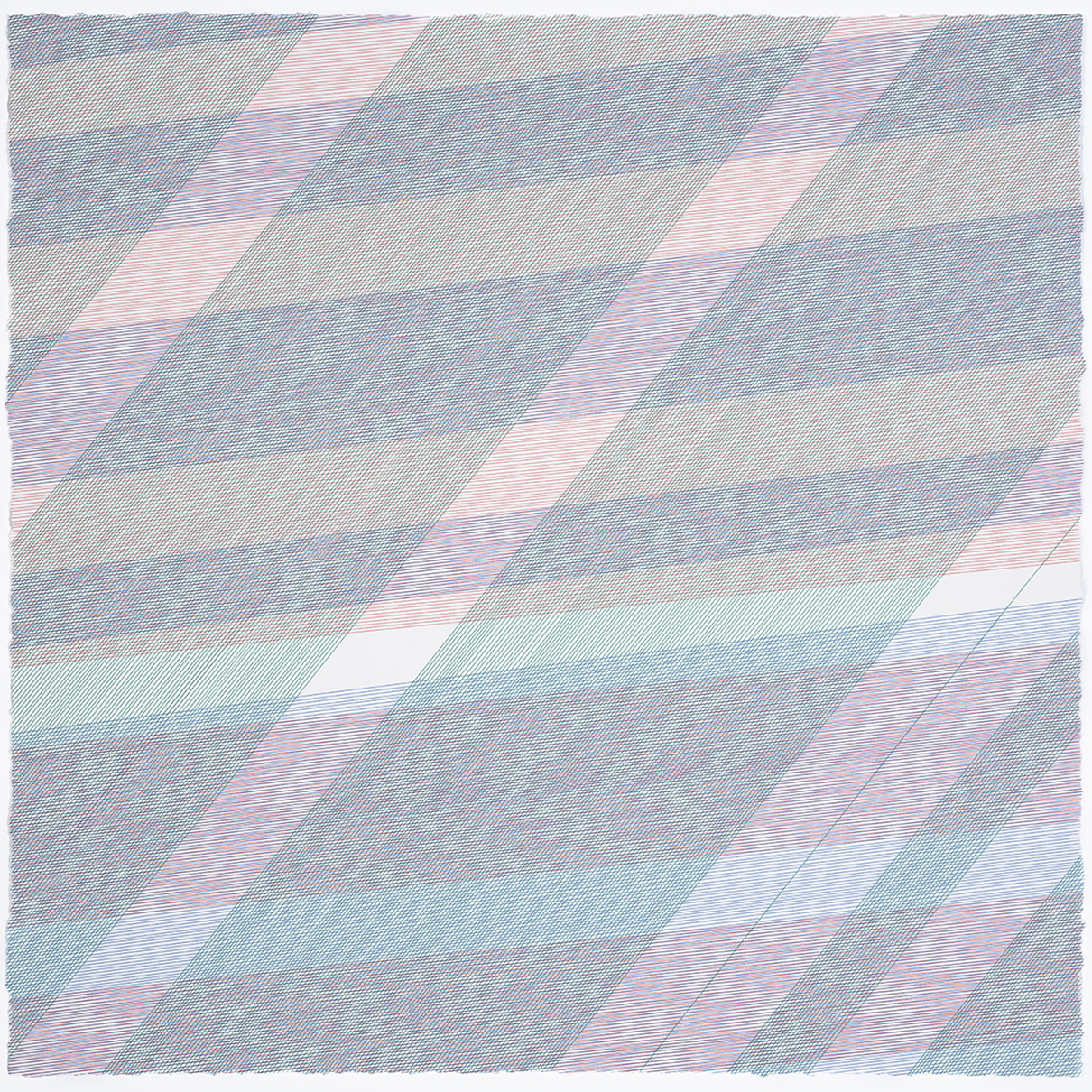
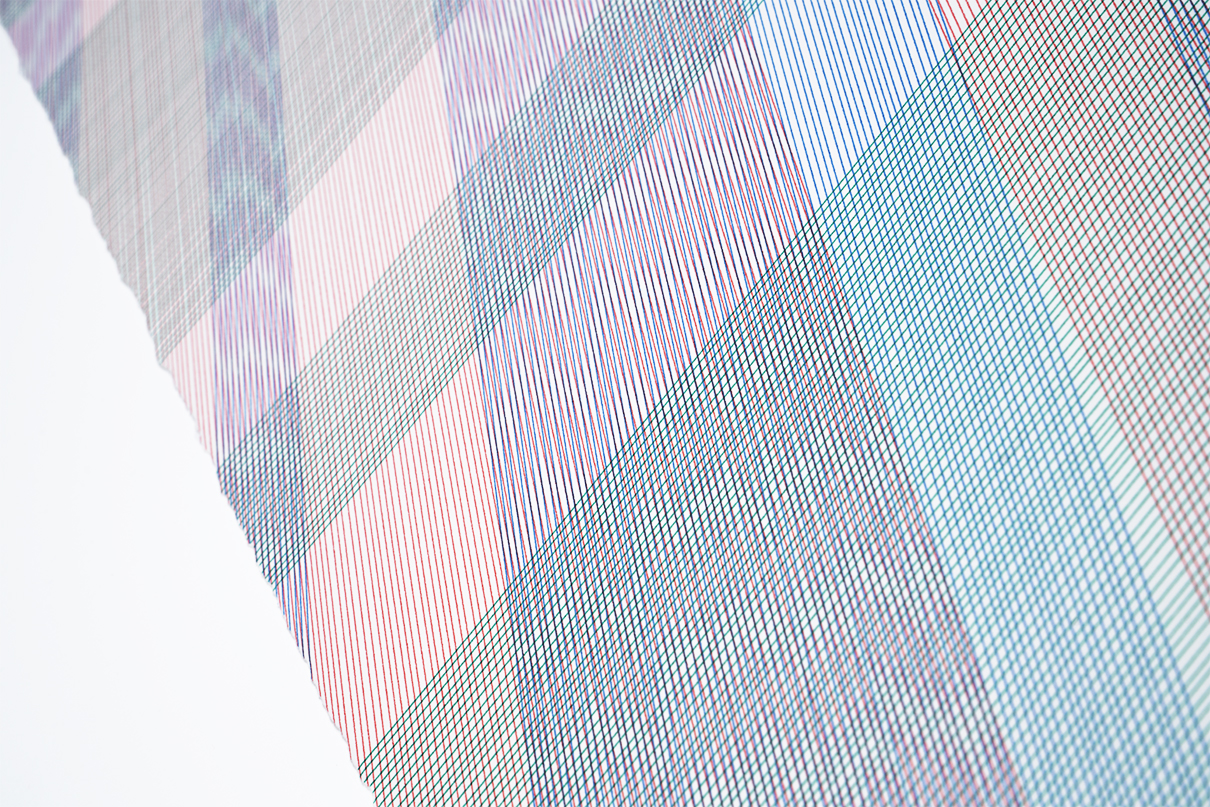
Reflecting on Rule-Based Creativity
This exploration merely scratches the surface of what's possible within the realm of rule-based generation.
Key takeaways from this journey include the diverse methodologies for establishing and applying rules, and the profound impact of individual rules on emergent system-level phenomena.
Expanding the Canvas
As highlighted earlier, the realms of generative art encompass a vast array of overlaps and omissions. Here, we'll explore some facets previously unaddressed.
Data as a Muse
While we've touched on chaotic data sources for generating true randomness, employing structured data sources presents another avenue of exploration.
Certain works in this genre seamlessly blend with data visualization, such as Aaron Koblin's Flight Patterns, which maps air traffic patterns across North America. Conversely, Maria Takeuchi and Frederico Phillips' Asphyxia utilizes a Kinect to capture dancer Shiho Tanaka's movements, transforming them into a 3D rendered form. Though representational, the output diverges from traditional data visualization techniques.
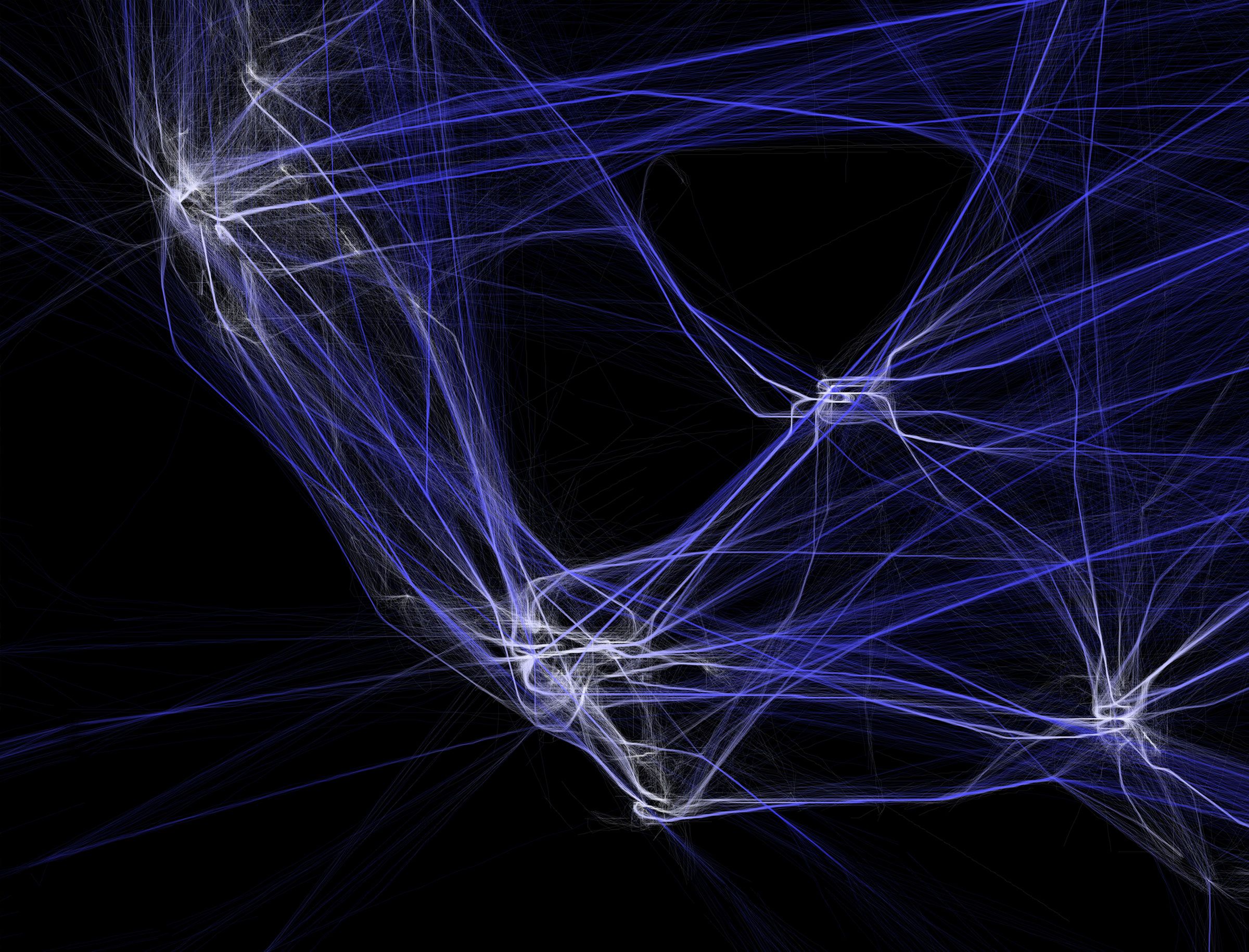
Flight Patterns (2010) - Aaron Koblin
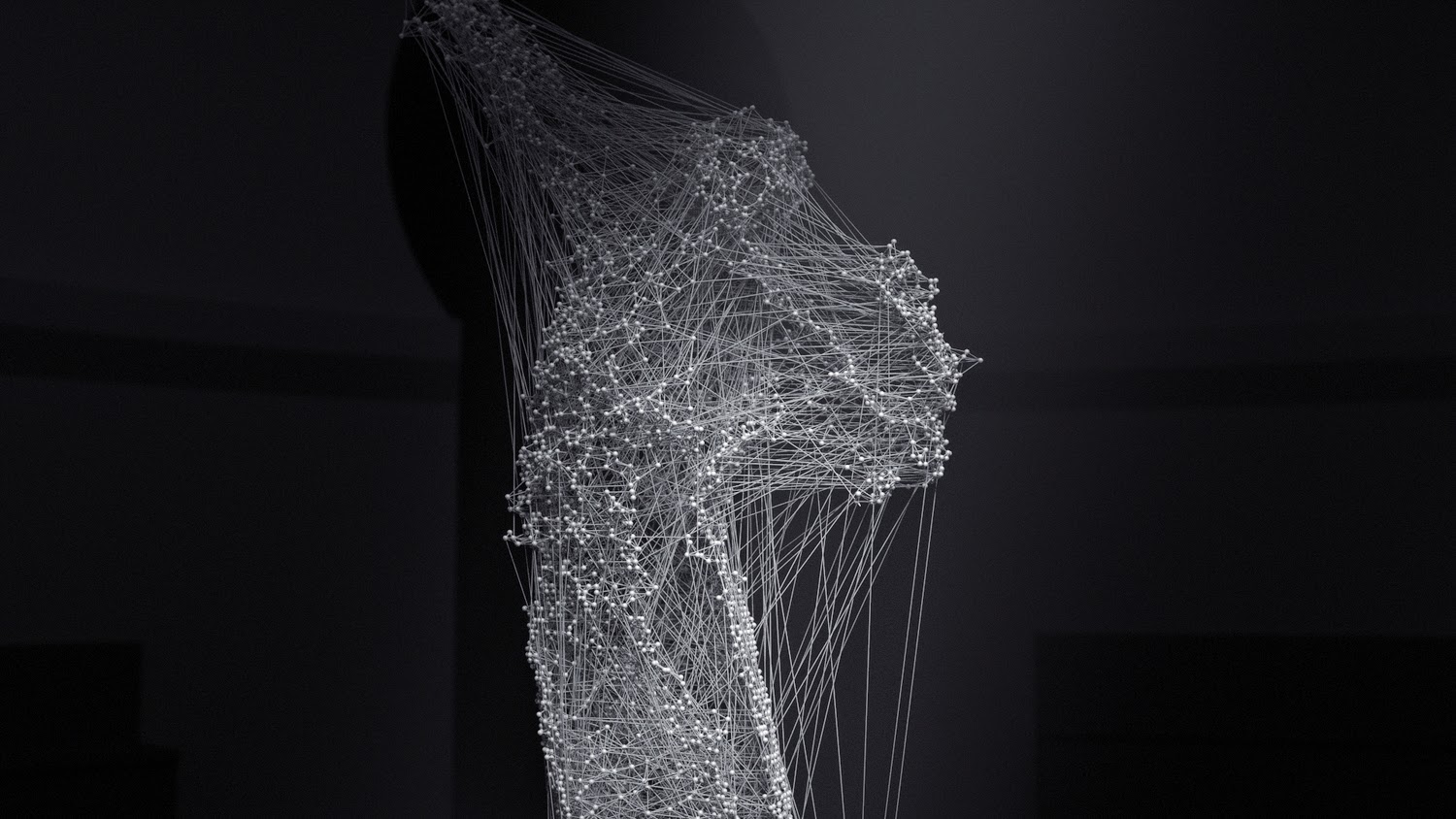
Asphyxia (2015) - Maria Takeuchi , Frederico Phillips, performed by Shiho Tanaka
"Data source" can also imply a direct analog translation to output, as seen in Charles Sowers' Windswept, where wind-driven metal arrows create visual patterns reminiscent of Vera Molnar's Interruptions, blurring the lines between data representation and artistic expression.
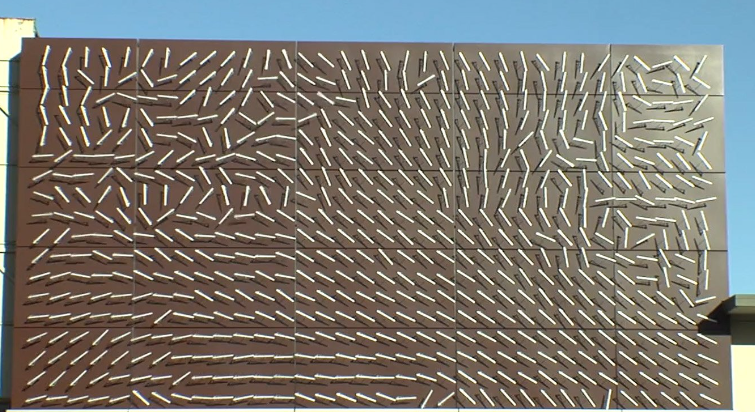
Windswept (2011) - Charles Sowers
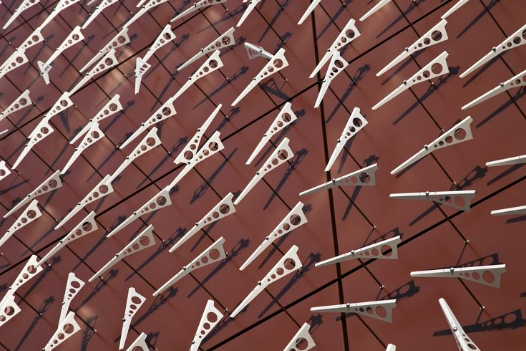
Windswept (2011) - Charles Sowers
The AI Intersection
Art leveraging machine learning occupies a distinct yet parallel lane to generative art. Despite the apparent differences, outputs from AI-driven processes are intrinsically generative. A machine learning algorithm, rooted in a complex rule system, could theoretically be discussed within the Rules section, though the unique characteristics of ML/AI art warrant its own classification.
Machine learning algorithms depend on datasets for training. Anna Ridler's Myriad (Tulips) exemplifies this, with Ridler manually compiling a dataset of 10,000 tulip photographs. Later, in Mosaic Virus, she employs a GAN (generative adversarial network) trained on this dataset to generate novel tulip images, highlighting the nuanced interplay between artist control and algorithmic autonomy.
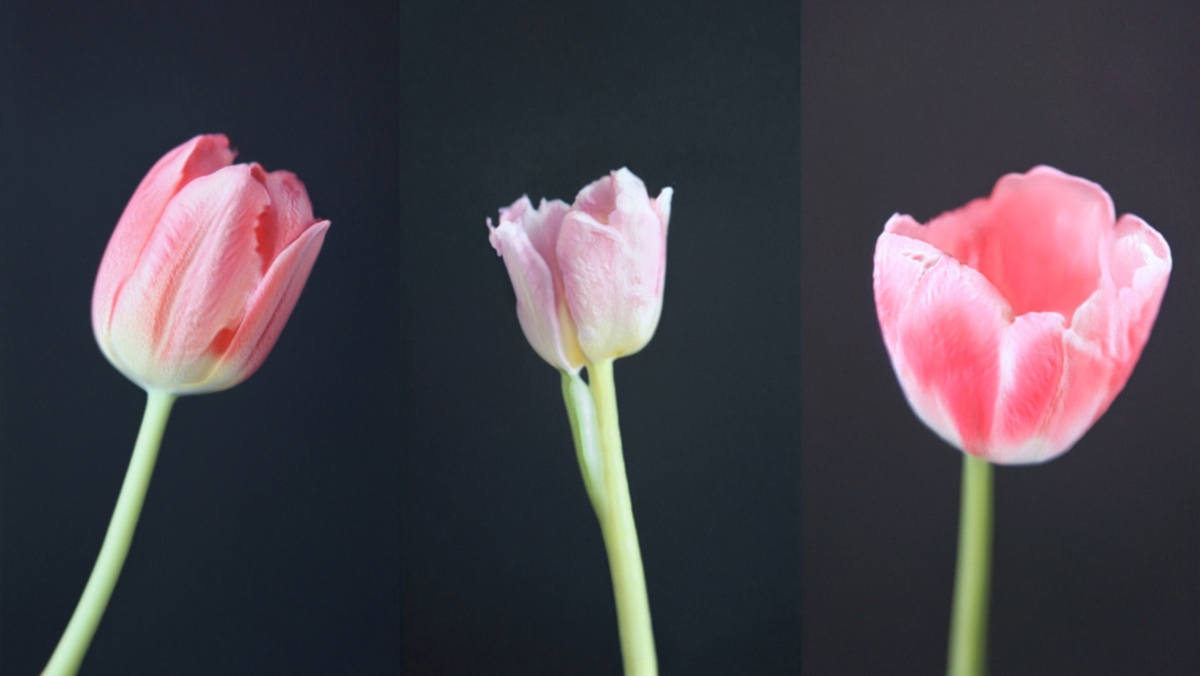
Myriad (Tulips) (2018) - Anna Ridler
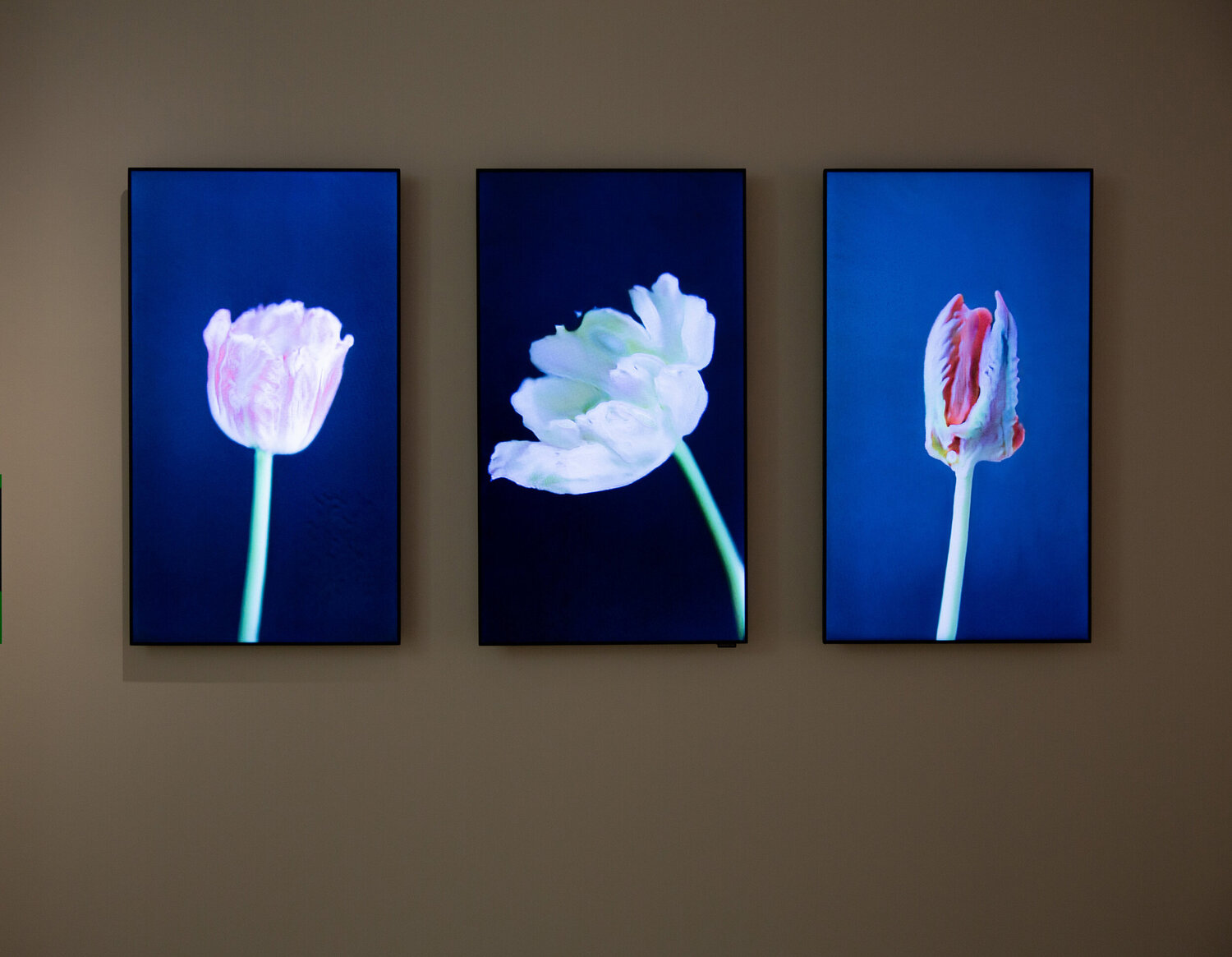
Mosaic Virus (2019) - Anna Ridler
In many scenarios, a data source acts as a byproduct of another process—naturally occurring information awaiting capture and organization. When considering the creative output's control dynamics, the data source largely falls outside the artist's purview, while manipulation and application of that data remain under their influence.
Ridler's project diverges, as she exercises considerable control over the dataset, entrusting the generative outcomes to the GAN's internal mechanisms.
Surrealist Automatism
Surrealists employed automatic drawing as a means for the artist's subconscious to manifest, allowing the hand to move "randomly" across the canvas. For early abstract artist Hilma Af Klint, this technique facilitated communication with the spirit realm during séances.
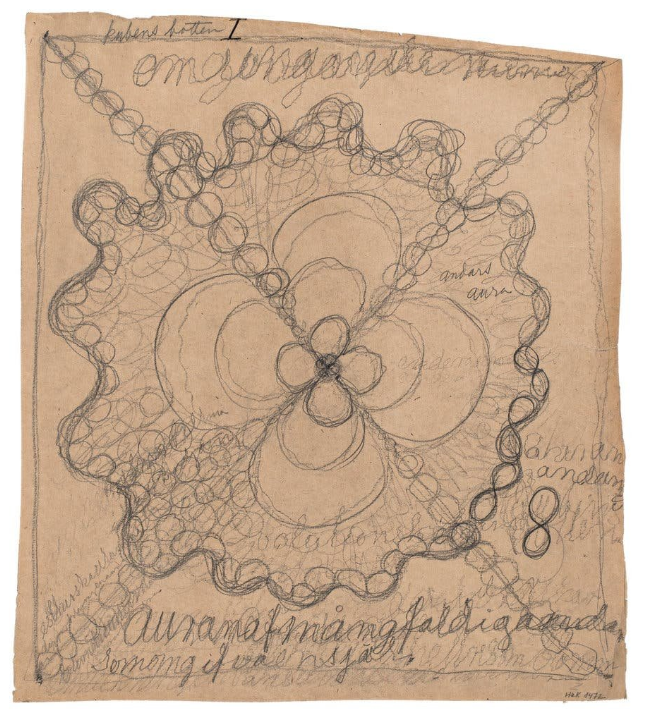
A collective automatic drawing by The Five, Hilma af Klint's spiritualist group
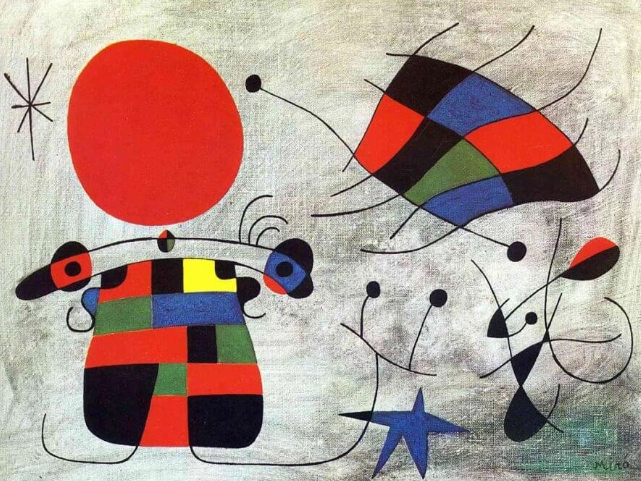
The Smile of the Flamboyant Wings (1953) - Joan Miró
Generative art, as previously defined, is characterized by its creation outside of direct human control, potentially stretching the definition to include automatism. However, if accessing the subconscious (or the spirit world) falls outside of conscious control, then such works might fit within the generative art paradigm.
Considering the balance of control inherent in many generative artworks—between the artist and the algorithm, or the artist and the participant—the relationship between the artist and their own subconscious may be viewed similarly. When ideas emerge, their origins can be as enigmatic and chaotic as the weather, suggesting a deeper interconnection between consciousness, creativity, and randomness.
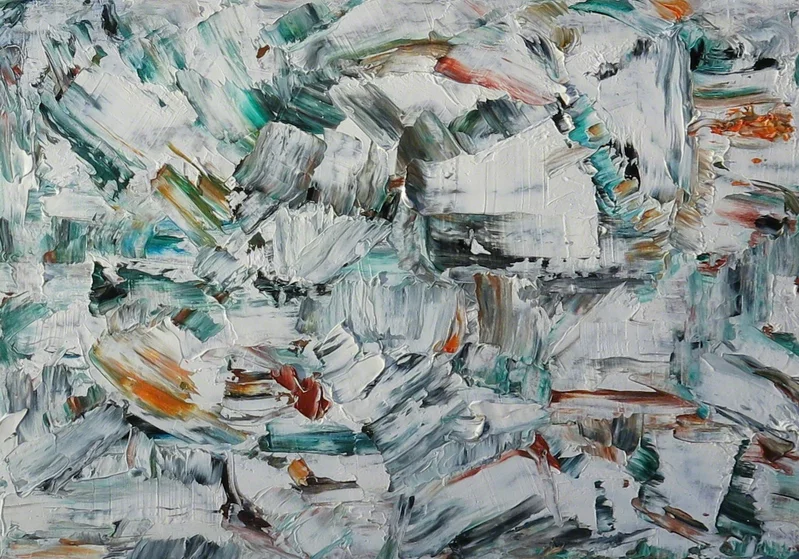
Untitled (1954-55) - Paul Emile Borduas
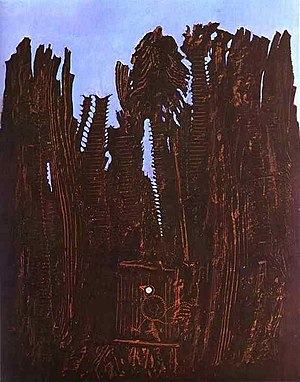
Forest and Dove (1927) - Max Ernst Uses grattage technique
Some automatists fully surrendered to their subconscious, crafting entire works under its guidance, while others used automatism as a starting point, later steering the work towards more structured or figurative expressions. Automatism paved the way for techniques that introduced chance and spontaneity into artistic creation, including collage, frottage (pencil rubbings), and grattage (paint scraping), further blurring the lines between conscious control and random influence.
This transition segues into the concluding discussion:
The Spectrum of Painting and Drawing
I posited that traditional painting could be viewed through a generative lens, particularly when automatism influences the creative process or when the act of painting itself incorporates elements of randomness.
Jackson Pollock's action paintings epitomize this blend of automatism and chance. His methodology, devoid of a predefined plan, allowed the artwork to evolve from the painting process itself, relinquishing control to the spontaneity of the moment. The lively, unrestrained nature of his drip technique underscores the presence of natural phenomena, such as fluid dynamics, introducing randomness into the artwork.
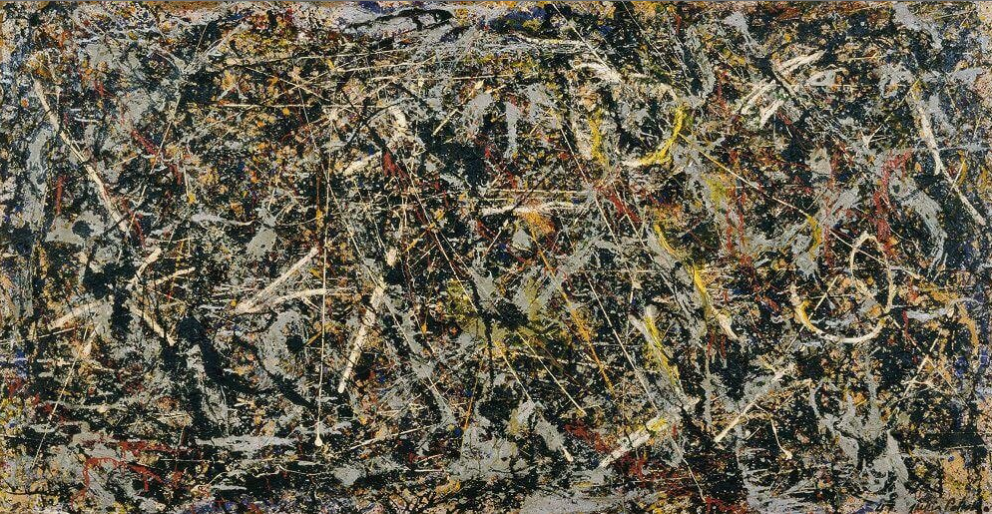
Alchemy (1947) - Jackson Pollock
Rather than categorizing paintings as either generative or not, a more nuanced approach views this characteristic as a continuum. Some artworks are tightly controlled by the artist, others heavily influenced by chance, with many residing in the intermediate space. The artist's intent and perspective also critically influence whether their work is perceived as generative.
Conclusion
Generative art, while often associated with digital mediums like p5js sketches, Vera Molnar's plotter drawings, and flow fields, reveals a deeper, broader canvas upon closer examination. This exploration, although extensive, likely overlooks additional dimensions and perspectives within the generative art landscape.
The interplay of categories discussed herein highlights the fluidity and potential for crossover, suggesting untapped avenues for artistic exploration and creation.
The conceptual landscape of generative art—pondering the delineations between chance and deterministic outcomes, the origins of creativity and randomness, the manifestations of generativity in nature, and the philosophical inquiries surrounding simulation and reality—offers a rich territory for inquiry.
Generative art is far from a nascent genre, yet its current renaissance hints at the infancy of its exploration. Anticipating and contributing to the evolution of this field, I remain eager to witness and engage with works that navigate these complex themes and questions, enriching the tapestry of generative art.
